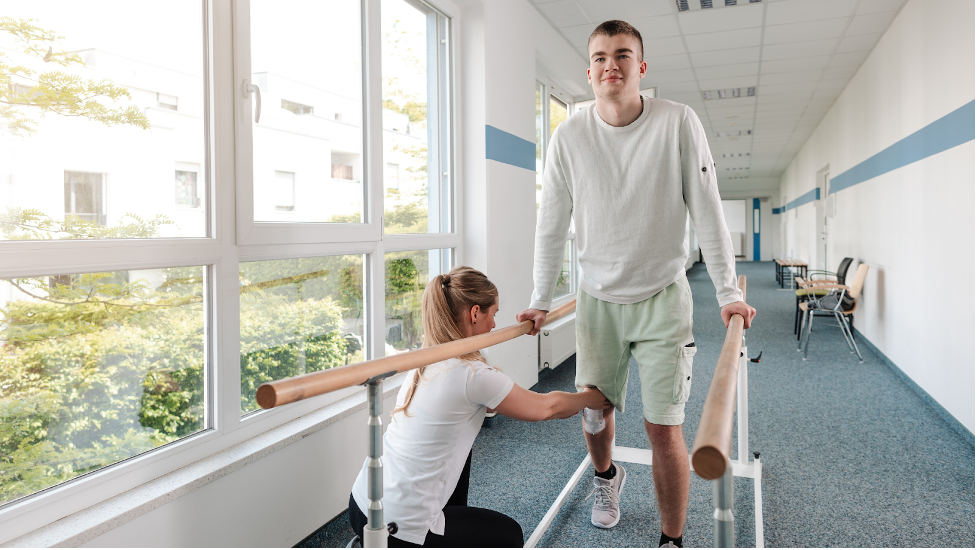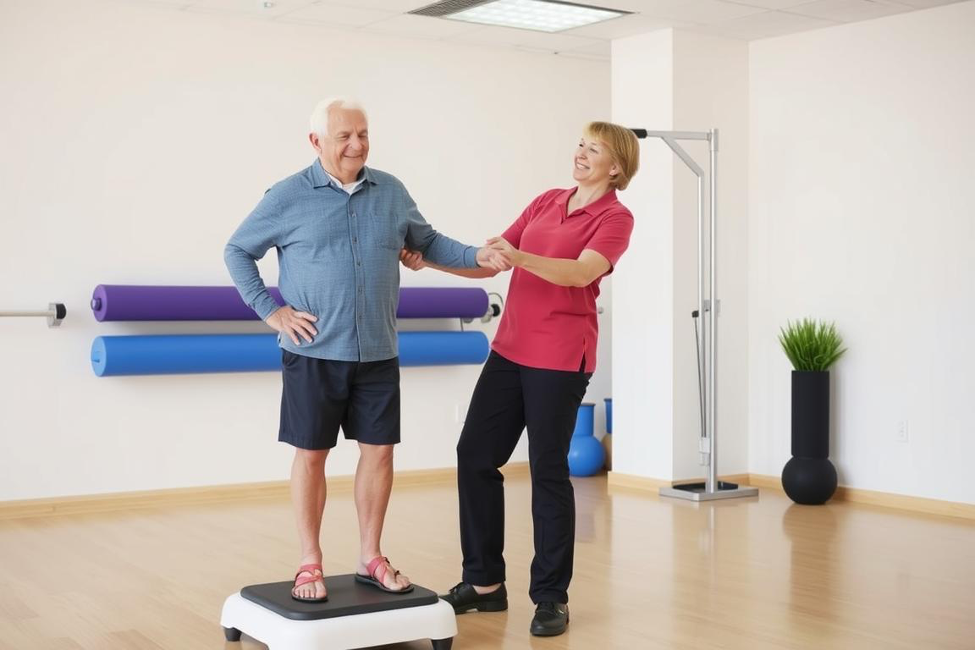Imagine a life where movement flows effortlessly, where pain no longer dictates your daily activities, and where your body responds with strength and resilience. This isn’t just a distant dream—it’s the reality that physio therapy can help create.
Whether you’re recovering from an injury, managing a chronic condition, or simply seeking to optimize your physical wellbeing, physio therapy offers a science-backed pathway to reclaiming control of your health journey.
Understanding Physio Therapy Treatment
Physio therapy, also known as physical therapy, is a healthcare profession focused on restoring and maintaining physical function, mobility, and overall wellbeing. Unlike passive treatments that simply mask symptoms, physio therapy addresses the root causes of physical limitations through targeted interventions, therapeutic exercises, and evidence-based techniques.
The treatment approach typically begins with a thorough assessment of your condition, medical history, and physical capabilities. Your therapist will evaluate factors like range of motion, strength, balance, posture, and movement patterns to identify specific areas that require attention.
What sets physio therapy apart is its focus on active participation. Rather than simply receiving treatment, you become an engaged partner in your recovery process. For those seeking comprehensive care with personalized attention to detail, exploring options for Physio Therapy in Uluwatu can be particularly beneficial. The practitioners there combine traditional therapeutic approaches with modern techniques in a setting that promotes holistic healing and recovery.
Benefits of Physio Therapy
The advantages of incorporating physio therapy into your health regimen extend far beyond simple pain relief. This comprehensive approach to physical wellness offers multiple benefits that can transform your quality of life in both the short and long term.
Improve Your Mobility with Simple Habits

Mobility is fundamental to independence and quality of life. Physio therapy helps restore and enhance your ability to move freely through targeted interventions that address joint restrictions, muscle imbalances, and movement patterns. By incorporating simple therapeutic exercises into your daily routine, you can experience significant improvements in how you move through the world.
Start with gentle morning stretches that target major muscle groups. A simple routine of ankle circles, knee-to-chest pulls, gentle spinal twists, and shoulder rolls can help maintain joint mobility and prepare your body for the day ahead. Your physio therapist can provide personalized recommendations based on your specific needs and limitations.
Support Recovery After Injury or Trauma

Following an injury or surgical procedure, the body needs structured guidance to heal properly. Physio therapy provides this crucial support through carefully designed rehabilitation protocols that promote tissue healing, restore function, and prevent complications.
The recovery process typically begins with controlling pain and inflammation, then gradually progresses to restoring range of motion, rebuilding strength, and finally retraining functional movement patterns. This systematic approach ensures that healing tissues are appropriately stressed to promote recovery without risking re-injury.
Boost Healing after Stroke or Paralysis

Neurological conditions like stroke or paralysis present unique challenges that require specialized rehabilitation approaches. Physio therapy plays a vital role in maximizing recovery through neuroplasticity—the brain’s remarkable ability to reorganize and form new neural connections.
Through exercises and activities, physio therapists help retrain the nervous system to regain control of affected muscles and relearn movement patterns. Techniques such as constraint-induced movement therapy, functional electrical stimulation, and task-specific training leverage neuroplasticity principles to optimize recovery.
The journey of neurological rehabilitation often requires patience and persistence. Progress may occur in small increments, but these accumulate into significant functional improvements over time. Physio therapists provide the expertise, structure, and motivation needed to navigate this challenging but rewarding process.
Strengthen Your Balance Through Daily Practice

Balance is a complex skill that relies on the integration of visual, vestibular, and proprioceptive information. As we age or experience certain health conditions, balance can deteriorate, increasing the risk of falls and limiting activity. Physio therapy offers effective strategies to enhance balance and prevent these negative outcomes.
Simple balance exercises can be incorporated into your daily routine. Try standing on one foot while brushing your teeth, walking heel-to-toe across your living room, or practicing gentle yoga poses that challenge stability. These activities strengthen the neuromuscular connections that control balance and improve your body’s automatic responses to positional changes.
Comparing Physio Therapy to Other Modalities
With numerous therapeutic approaches available today, understanding how physio therapy compares to other modalities can help you make informed decisions about your healthcare. Each approach offers unique benefits and may be appropriate in different situations or for different conditions.
Osteopath vs Physio
While both osteopaths and physio therapists work to improve physical function and relieve pain, they approach treatment from different perspectives. Osteopathy is founded on the principle that the body’s structure and function are intimately connected, with a focus on how the skeleton, joints, muscles, nerves, and circulation work together to support health and recovery.
Osteopaths typically take a more holistic, whole-body approach, often using manual techniques to address how an injury or condition in one area might affect other parts of the body. They may place greater emphasis on the relationship between the body’s structure and its internal organs.
Physio therapists, in contrast, often focus more specifically on restoring movement and function to particular areas of the body affected by injury or disease. Their treatment plans typically include a significant exercise component, with an emphasis on active rehabilitation and patient participation in the recovery process.
Physio Therapy vs Cupping Therapy
Physio therapy addresses the underlying causes of pain and dysfunction through active rehabilitation, manual techniques, and patient education. It focuses on restoring movement patterns, building strength, and improving functional capacity through a progressive, goal-oriented approach.
Cupping therapy, on the other hand, involves creating suction on the skin using glass, bamboo, or silicone cups. This negative pressure is believed to increase blood flow, release fascial restrictions, reduce muscle tension, and promote healing. The treatment typically leaves characteristic circular marks that fade over several days.
Many individuals find that these approaches can complement each other effectively. If you’re curious about experiencing this traditional approach alongside conventional treatment, exploring options for Cupping Therapy in Bali allows you to benefit from practitioners who understand how to integrate this technique with other therapeutic approaches for optimal results.
Physio vs Chiro
Chiropractors primarily focus on the relationship between the spine and nervous system, with an emphasis on spinal alignment. Their core technique is spinal manipulation or adjustment—applying controlled force to joints that have become restricted in their movement. Chiropractic care is often sought for back pain, neck pain, headaches, and other conditions believed to be influenced by spinal alignment.
Physio therapy takes a broader approach to physical rehabilitation, addressing not only joint mobility but also muscle strength, movement patterns, functional abilities, and overall physical performance.
The duration of treatment also tends to differ between these approaches. Chiropractic care often involves more frequent, shorter sessions over an extended period, while physio therapy typically follows a progressive model with the goal of patient independence through self-management strategies.
Making Informed Choices
Navigating the landscape of physical rehabilitation options requires careful consideration of multiple factors. Making informed decisions about your care ensures that you receive the most appropriate and effective treatment for your specific situation.
Understand your condition
The foundation of any effective treatment plan is a clear understanding of your condition. Take time to learn about your diagnosis, including its causes, typical progression, and evidence-based treatment approaches. Reliable sources include medical professionals, reputable health websites, and peer-reviewed research.
Ask questions during consultations to ensure you comprehend the nature of your condition. What structures are affected? What factors might be contributing to your symptoms? What is the expected timeline for recovery? Understanding these aspects empowers you to participate actively in your treatment decisions.
Know The Purpose of Each Modality
Different therapeutic approaches serve different purposes in the healing process. Understanding what each modality aims to achieve helps you evaluate its relevance to your specific needs.
Physio therapy excels at restoring movement patterns, building strength and endurance, improving functional abilities, and teaching self-management strategies. It’s particularly effective for conditions requiring active rehabilitation and long-term management of physical function. This is a simple comparison to determine the appropriate therapy for your needs:
| Therapy Type | Primary Focus | Best For | Approach |
| Physio Therapy | Movement, function, strength | Rehabilitation, injury recovery, chronic condition management | Active exercises, manual therapy, education |
| Osteopathy | Whole-body structural relationships | Musculoskeletal issues with systemic influences | Manual manipulation, holistic assessment |
| Chiropractic | Spinal alignment, nervous system | Back/neck pain, headaches | Spinal adjustments, joint manipulation |
| Cupping Therapy | Blood flow, fascial release | Muscle tension, myofascial pain | Suction cups creating negative pressure |
Consider Long-Term vs Short-Term Benefits
When evaluating treatment options, it’s important to consider both immediate relief and long-term outcomes. Some approaches may provide quick symptom relief but offer limited lasting benefit, while others might require more time and effort initially but lead to more sustainable results.
Passive treatments like massage, heat therapy, or electrical stimulation can provide valuable temporary relief, creating a window of comfort that facilitates more active interventions. However, research consistently shows that active approaches—those requiring your participation and effort—generally produce better long-term outcomes for most musculoskeletal conditions.
Check The Qualifications of The Provider
The effectiveness of any therapy depends significantly on the knowledge, skill, and experience of the practitioner. When selecting a healthcare provider, take time to verify their qualifications, specializations, and approach to care.
For physio therapists, look for proper licensing and registration with relevant professional bodies. Many physio therapists pursue additional certifications in specialized areas such as orthopedics, neurology, sports rehabilitation, or manual therapy. These credentials can indicate advanced training in areas relevant to your needs.
Combine Treatments When Necessary
For complex or persistent conditions, a multi-modal approach often yields the best results. Different therapeutic techniques can complement each other, addressing various aspects of your condition simultaneously.
For example, a person recovering from a sports injury might benefit from physio therapy for rehabilitation and functional training, massage therapy for soft tissue work, and acupuncture for pain management. Similarly, someone managing chronic back pain might combine physio therapy exercises with periodic chiropractic adjustments and mindfulness practices for stress reduction.
Time to Empower Your Health
Your journey toward optimal physical function and wellbeing is uniquely yours, but you don’t have to navigate it alone. Physio therapy offers a scientifically-grounded, personalized approach to addressing physical challenges and enhancing your body’s natural capabilities.
Whether you’re recovering from an injury, managing a chronic condition, or simply seeking to improve your physical performance, the principles and techniques of physio therapy provide valuable tools for achieving your goals. By understanding your options, asking informed questions, and actively participating in your care, you position yourself for the best possible outcomes.
Lynn Martelli is an editor at Readability. She received her MFA in Creative Writing from Antioch University and has worked as an editor for over 10 years. Lynn has edited a wide variety of books, including fiction, non-fiction, memoirs, and more. In her free time, Lynn enjoys reading, writing, and spending time with her family and friends.















